Nutcracker Museum
Visit our Sister Sites at:
www.kidslovenutcrackers.com and
www.nutcrackerday.com
October 2016 Newsletter
IVORY AND BONE NUTCRACKERS
Although ivory is relatively easy to carve, it is not strong
enough to endure the continued rigors of cracking hard-shelled
nuts with lever type nutcrackers.
Therefore, nearly every all-ivory nutcracker is of the
screw type, where pressure to crack the nut is gradually
increased. Even
more common are nutcrackers trimmed with ivory, such as metal
nutcrackers with ivory handles, or wooden nutcrackers with ivory
trim. |
||||
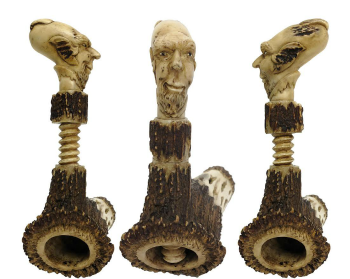 |
|
|||
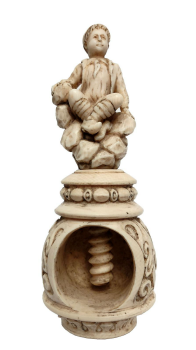 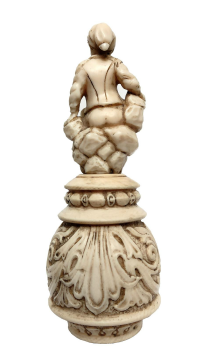 |
|
|||
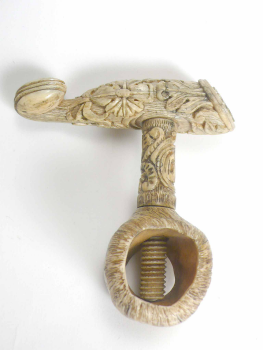 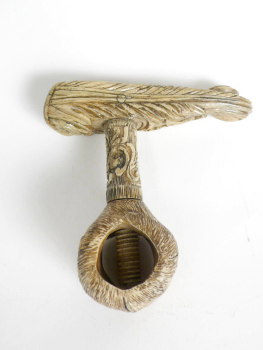 |
|
|||
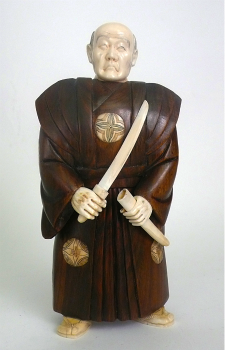
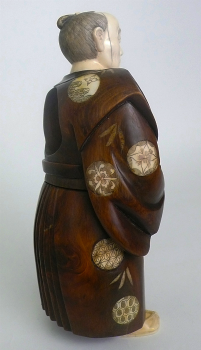 |
This incredible piece depicts the full figure of a Japanese Samuraui. He is dressed in typical Samurai costume of the 19th century with long kimono that is decorated with inlaid ivory medallions and bamboo leaves. A medallion on the bottom states “Paris, 1897”. | |||
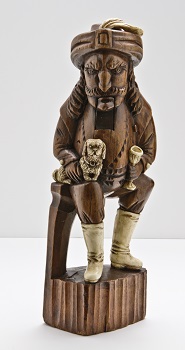
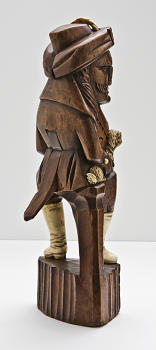 |
This swashbuckling Pirate’s stern expression seems at odd with his love of the little dog. Made of walnut circa 1870 and trimmed with ivory this French nutcracker attracts much attention in the museum. Note also the ivory boots, goblet, and hat plume. |
|||
|
|
||||
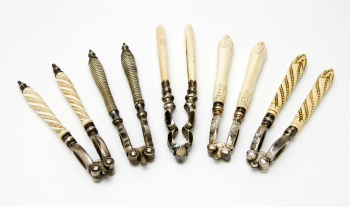
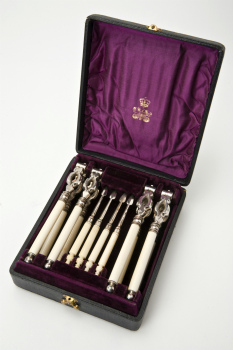 |
More often ivory is used as handles of silverware, with the working part of the nutcracker made of silver plated iron or brass. These shown are from England, 19th century. The boxed set is unusual because it contains 4 nutcrackers instead of the more common 2 which are included in such sets. |
|||
|
Arlene Wagner,
The
Nutcracker Lady |
||||
07/23/21
Quick Links
Dogs that are able to be carried at all times may come into the museum
and the store.
Service animals are always welcome.
Contact Us
735 Front Street
P.O. Box 2212
Leavenworth, WA 98826
(509) 548-4573
MUSEUM HOURS
11:00PM - 5:00PM Daily
We suggest visitors arrive at least 30 minutes before closing.
Museum Online Store
Privacy Policy
Terms & Conditions
Refunds & Returns
Nutcracker Museum Mission Statement:
"To foster and encourage the interest of the general public of the importance of nuts in the diets of humans throughout history and in the evolution of the nutcracker. No other tool or collectible has shown such a wide diversity of material and design as the implements used to crack the hard shell of a nut".
Museum Admission:
Adults - $5.00 (Ages 17 - 64yrs)
Seniors - $3.50
(Age 65yrs +)
Youth - $2.00 (Ages 6 - 16yrs)
Child - FREE (Ages 0 - 5yrs)
Active
Military - FREE (Spouse & Children Free with ID)
